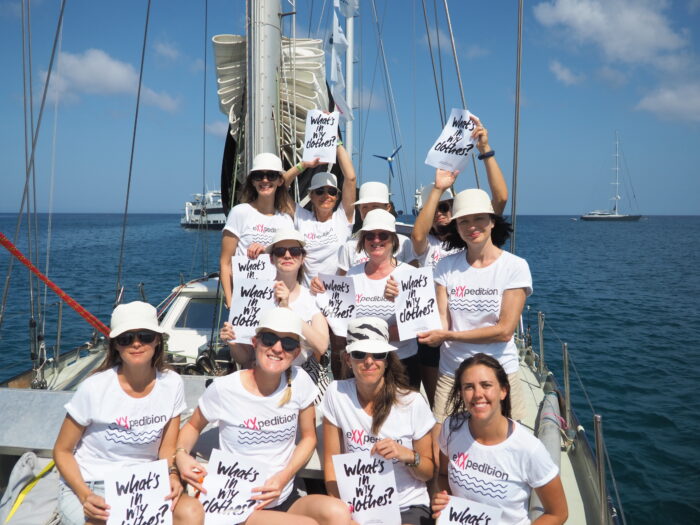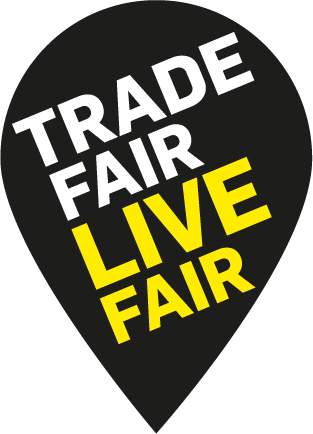The sea. It is a sea upon which wars have been fought, across which goods and slaves have been traded, across which we have journeyed for centuries to exploit ‘new’ lands, decimate indigenous populations with our diseases and return with their treasures, and across which we are sailing today to investigate ocean plastic pollution.
The sea. Writers and poets speak of the silver sea, the lonely sea, the audacious sea, the sublime sea…. The plastic sea doesn’t have quite the same ring to it, yet that is one of the predominant qualities of the sea in this area of the South Pacific, and the reason why we are making this voyage south from Galápagos to Rapa Nui, Easter Island. We will be sailing into the South Pacific Gyre where the world’s predilection for plastic is at its most visible.
As we sail with two thousand miles of blue before us, we will experience many faces of this mercurial sea.
On our first day at sea, an hour out of harbour, we passed the meeting of currents which had split as they passed around San Cristóbal and were rejoining on the other side of the island, tracing an almost glass-like, curvilinear track between deeply furrowed verges.
CURRENT, in navigation, courans, (currens, Lat.) a certain progressive movement of the water of the sea, by which all bodies floating therein are compelled to alter their course, or velocity, or both, and submit to the laws imposed on them by the current. An Universal Dictionary of the Marine 1769. And therein lies our challenge on this voyage. How to bring velocity to a cultural current to move behaviour and habits faster around plastic pollution?
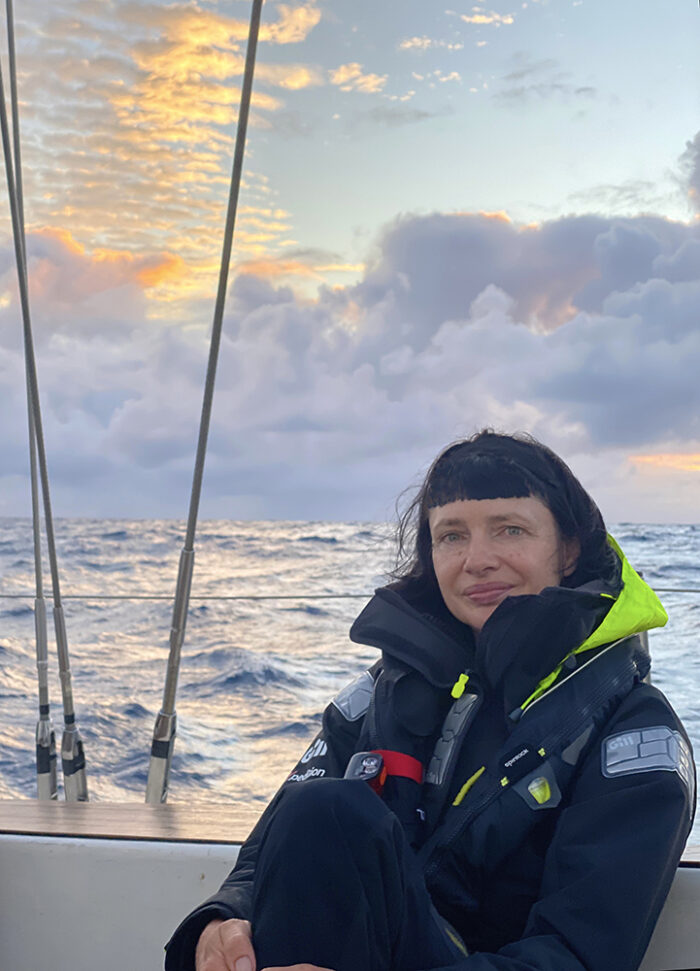
On the first night, the sea slooshed companionably against the hull and its undulating voice lulled us into the gentlest of womb-like sleeps until we are woken four hours later for our next watch. The midnight watch is my favourite. I walked up the companionway steps into a dark starscape. (No-one on board knows why a ship’s corridor is called a companionway as, on SV TravelEdge at least, it is barely wide enough for two people to pass) The moon sat like a luminous saffron saucer on the table of the horizon.
On the second night, the sea whispered conspiratorially and lured us with the glittering phosphorescence of a billion plankton. A shoal of flying fish were visible as white flashes of leaping light to starboard and the brightest of shooting stars illuminated the night sky.
On the third day we tangoed across the waves and eddies, our white ruffled line tracing a course across the deep blue dancefloor. Sea sickness set in amongst many of the crew as the sea roiled and seethed with a short swell and science was postponed in the hopes of a return to a kinder ocean tomorrow.
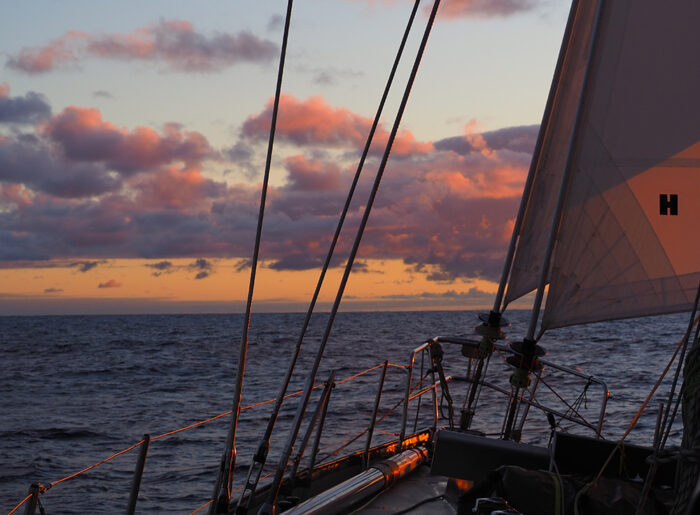
WAVE, a volume of water elevated by the action of the wind upon its surface, into a state of fluctuation. Definition from An Universal Dictionary of the Marine, 1769. We start asking ourselves, what are the actions we can take as a multidisciplinary crew to build momentum, to agitate, to sweep away resistance and create an unstoppable wave of change?
On the fourth day the swell lengthened, so we twice dropped the Manta Trawl off the spinnaker pole for half an hour each time. The contents of the trawl were passed through three sieves of increasingly fine mesh. Several Men o’ War but no visible plastic.
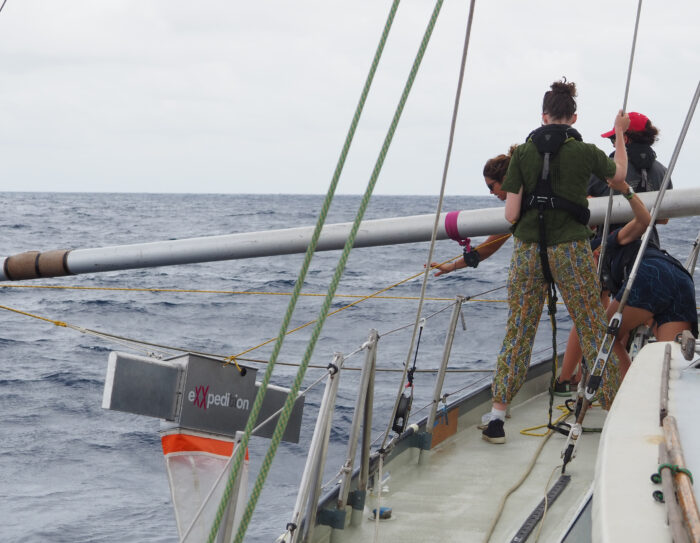
On the fifth day we made our first drop of the Niskin Bottle. I watched it plunge down into the unfathomable depths of the ocean, astonished by the clarity of the water as the rope extended to its full 25 feet. We whispered ‘Find the Niskin’ as we deployed the messenger weight, known on board as the golden snitch, which triggers the Niskin to close. These samples will be sent back to the lab in Plymouth to analyse how the types and quantities of microplastics in the subsurface compare to the surface water and will be the first global dataset of its kind.
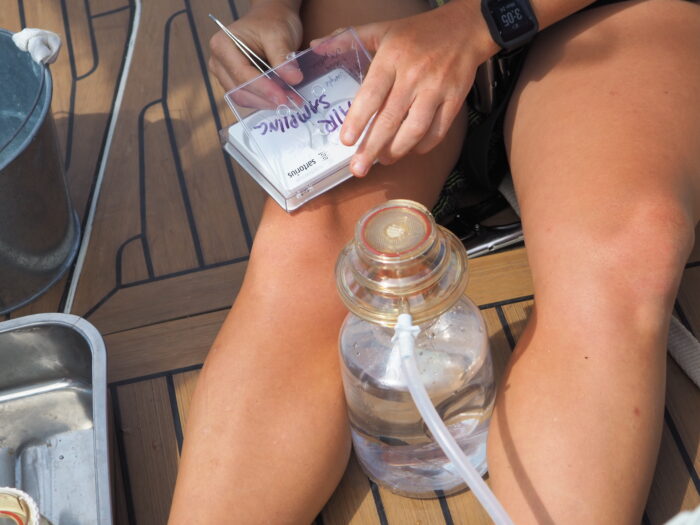
On the sixth day Maggie, our first mate, hoisted metal buckets up the Mizzen mast. These will be left there for 311 nautical miles to determine whether microplastics are being transported by winds.
As the voyage continues, the wind drove us on towards our destination, with scurrying clouds and a seething sea painted a hundred hues of blue, green, grey and white. We pitch and roll. Sleep is difficult as the sheets and rigging rattle overhead and we slide into the leecloth or hull, depending on whether our bunk is port or starboard. We pass the 1000 mile mark – halfway through our voyage. Our night watch is spent creating a humorous poem about our voyage and crew based on the Beaufort Scale, which rates wind force from 0 to 12, although we have only experienced up to Force 6 to date.
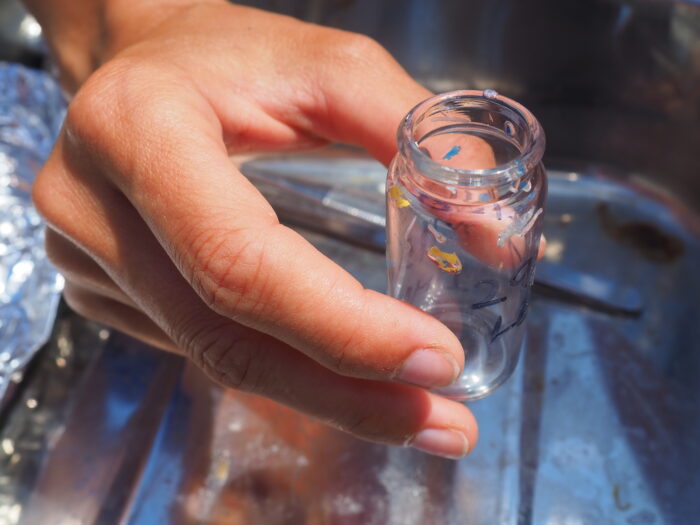
Ten days into our voyage. Every mile brings us nearer to the gyre and ever trawl brings up an increasing amount of plastic: translucent filaments which coil inside our sample bottles; flecks of blue, green, white, too small for the AFTR on board so these will need to be analysed back in the lab in Plymouth; a black mesh, still pending analysis.
Thirteen days into our voyage the sea gods smile on us and the sea is almost eerily calm as we enter the South Pacifiic Gyre. We have sailed over 1700 miles and are in one of the remotest areas of the Pacific Ocean, nearing the most remote inhabited island in the world. We spend the morning and afternoon dropping the manta trawl and Niskin and analysing the results. We are shocked at what we find: our trawls within the Gyre bring up five times more microplastic, microfibres, and film than the total of all the other trawls we have carried out outside the Gyre on this voyage.
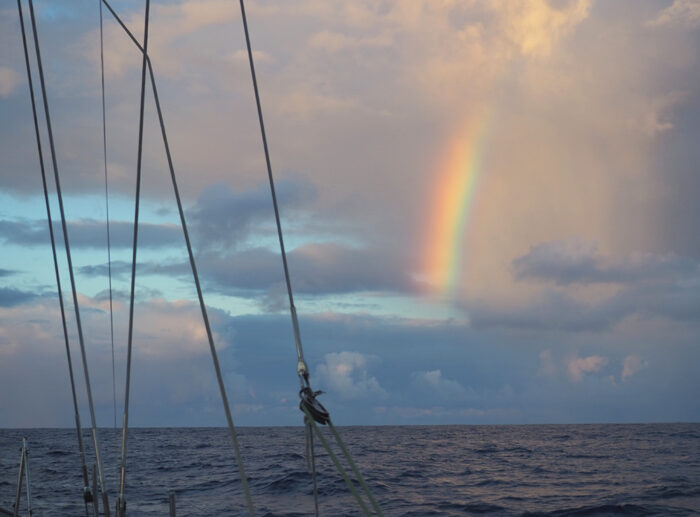
Almost every watch continues to bring its moments of awe at the sublime beauty surrounding us: the evening a school of pygmy killer whales played in our bow waves; the pinks, purples and oranges the sun paints the clouds as it sets a little later every evening on our journey south; and this morning when we saw a bright flash of rainbow suspended in a cloud at sunrise. The rainbow is a symbol of hope the world over which transcends the scientific explanation behind this regularly occurring phenomenon formed by the meeting of sunshine and water.
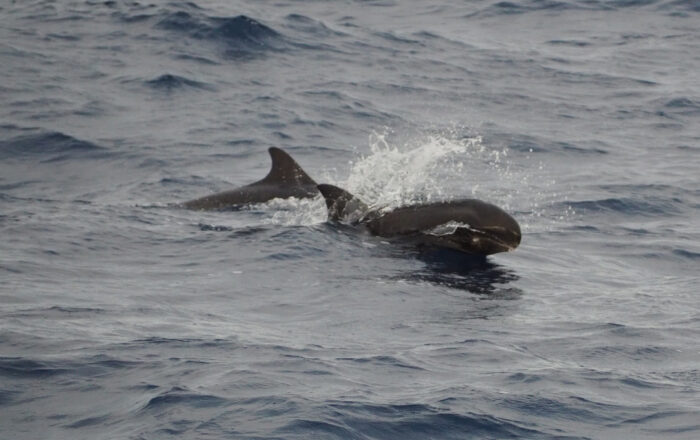
And herein, perhaps, lies the pathway towards finding an answer for our challenge. We need to engage people around the world in the fight to preserve the beauty and biodiversity of our oceans. We need to use the groundbreaking science we are collecting on board as a tool, but also engage people in an emotional response to the problems of plastic pollution.
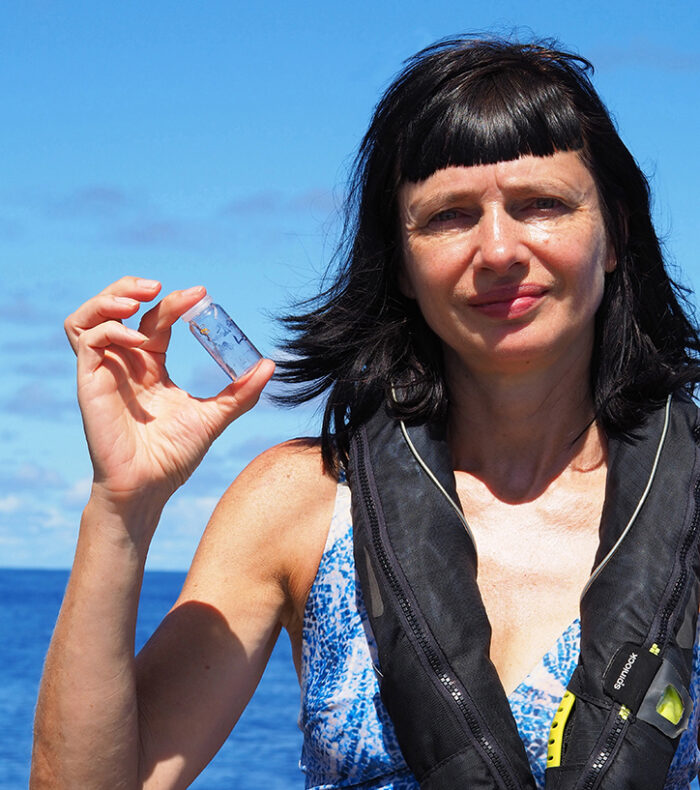
A little over 200 years ago, the great explorer and scientist Alexander Von Humboldt travelled through Latin America. The Humboldt Current is named after him, an upwelling current bringing nutrients up from the deep but also bringing with it some of the tide of plastic which makes its way into the South Pacific Gyre. Humboldt’s scientific method encompassed art history, poetry and politics but in the intervening years scientists have pursued ever-narrowing areas of expertise.
The crew on board this eXXpedition voyage has been selected for our multidisciplinary set of skills and we need to work together to rediscover a multidisciplinary approach. In a world where we tend to draw a demarcation line between science and the arts, the subjective and objective, we need to reconnect science with our emotions, because we only protect what we love. I would like to think that this morning’s rainbow is nature’s way of telling us that there is hope for our oceans if we can find ways to make people around the world fall back in love with the science and poetry of this boundless deep blue sea.
At the G7 Summit, which wrapped up in Biarritz earlier this week, climate change was a central focus. On the 24th of August, just ahead of the summit, President Macron, along with 32 major fashion brands revealed the Fashion Pact, an industry wide movement aimed at aligning the fashion industry with the UN Sustainable Development Goals.
If you haven’t read the Pact, which we recommend doing, here’s what you need to know:
- The Pact is a series of commitments based on Science-Based Targets (SBTs).
- The Pact is aiming to be adopted by 20% of the global fashion industry
- The 32 signatories include:
- Adidas
- Burberry
- Chanel
- H&M
- Gap
- Inditex (Zara, Pull & Bear, Bershka, etc)
- Nike
- Nordstrom
- Prada
- Kering (Gucci, Yves St Laurent, Balenciaga, etc)
- Puma
- PVH (Calvin Klein, Tommy Hilfiger, etc)
- Stella McCartney
- The focus is on 3 pillars: Climate, Biodiversity, and Oceans
- Commitments include already existing initiatives like the UNFCCC’s Fashion Charter (of which Fashion Revolution is a signatory), alongside numerical targets like brands reaching 100% renewable energy in their own operations by 2030
Below, we hear from 3 experts across our global coordination team to find out what this Pact means for the industry, and what’s missing…
Science-Based Targets
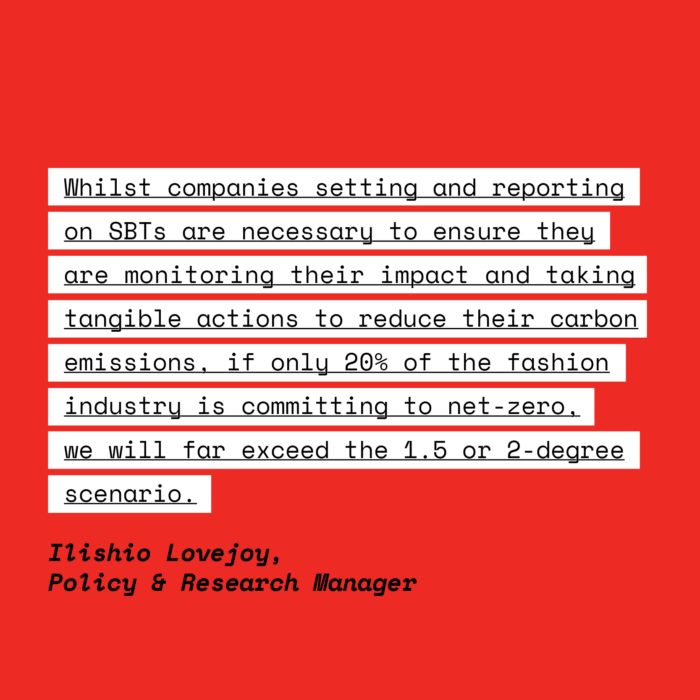
Orsola de Castro, Co-founder: Holding fashion brands to Science-Based Targets is incredibly important for industry change. It removes the wiggle room potential of many broad and ambiguous commitments we’ve seen up until now.
Sienna Somers, Policy & Research Coordinator: SBTs for greenhouse gases are based on a given brand’s size and turnover, they must set targets to reduce their footprint in line with the 1.5-degree pathway demanded by the International Panel on Climate Change. These are pretty commonplace within the industry now and are comparable from one brand to another. However, most of the SBTs in the fashion industry are focused on the companies own operations and are not looking at the emission at the raw material level, which is where we know the majority of brands’ impact comes from. We need to see brands set targets and incentives from their raw material suppliers and through the rest of the supply chain. I am very pleased to see the addition of developing SBTs for biodiversity, this is something that is sorely needed, especially at the raw material level.
Ilishio Lovejoy, Policy & Research Manager: The Fashion Transparency Index has worked for years to push for more credible, comprehensive and comparable public disclosure of businesses’ commitments, practises and, importantly, impacts. Whilst companies setting and reporting on SBTs are necessary to ensure they are monitoring their impact and taking tangible actions to reduce their carbon emissions, if only 20% of the fashion industry is committing to net-zero, we will far exceed the 1.5 or 2-degree scenario. In contrast, the UNFCCC’s Fashion Industry Charter aims for at least 50% of the fashion industry to join, and targets not only fashion brands but media outlets, industry associations, governments and NGOs.
Collaboration over Competition
With “20% industry adoption of the Pact”, the question remains: what about everyone else?
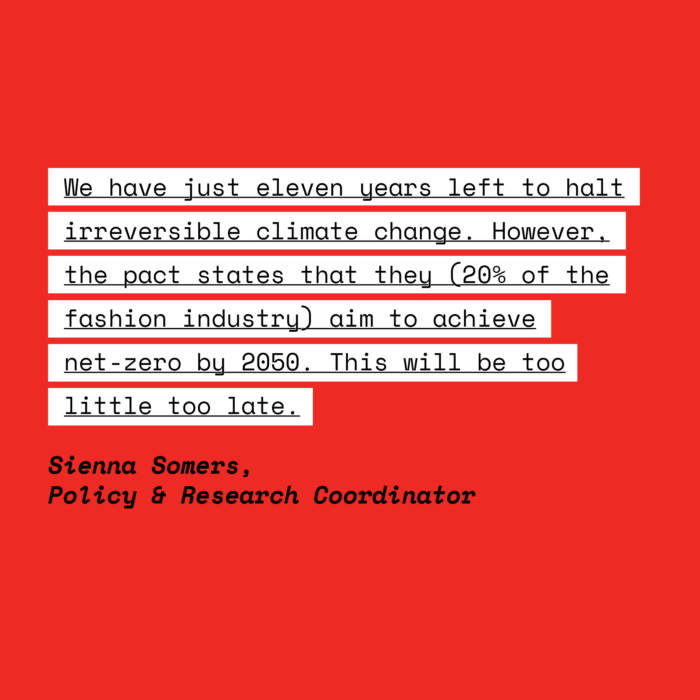
Ilishio Lovejoy: We need to see significantly more than 20% of the global fashion industry (measured by volume of products) working together to achieve the systemic change that is necessary.
Sienna Somers: We have just eleven years left to halt irreversible climate change. However, the pact states that they (20% of the fashion industry) aim to achieve net-zero by 2050. This will be too little too late. In addition, SBTs assume everyone is essentially doing their ‘fair share’. Yet if the remaining 80% of the industry is not making progress towards tackling climate change, these actions will not be enough.
Orsola de Castro: If this 20% was made up of brands that had never made strides towards sustainability, then this would be something worth celebrating. But the fact that many of the brands, like Kering and Stella McCartney have been vocal about their environmental goals for years means that this is nothing new. Kering has been telling us they are the most sustainable luxury brand possible for the past five years, yet only now they’re signing onto these targets – what have they been doing this whole time?
Most notably missing from the list of signatories is LVMH group (Which owns Louis Vuitton, Dior, Kenzo, and dozens more luxury houses). As Kering’s biggest competitor, LVMH’s absence is a classic example of the anti-collaboration mentality that hinders sustainable innovation in the fashion industry. In a climate emergency we need collaboration over competition.
Change, NOW
While the Pact is focused on tomorrow, via its non-obligatory targets, we need action today.
Ilishio Lovejoy: The pact calls for, “Eliminating the use of single use plastics (in both B2B and B2C packaging) by 2030”. We need to see action being taken now, not by 2030. There is no longer an excuse to use virgin plastics when there are so many recycled alternatives available.
Orsola de Castro: 2030 is ridiculous – we could all be dead by then! We need a ban on single-use plastics NOW.
The Pact states, “Each member company may choose appropriate courses of action from the possibilities listed as examples below each commitment, to achieve the objectives defined in the Pact”.
Sienna Somers: Essentially, this is saying that the contents of the Pact are non-binding or non-obligatory, merely suggestions. We, as citizens, need to hold brands accountable to their commitments, otherwise, these statements, pacts and charters are simply greenwashing. We also need to demand legislation to hold these brands (and the brands doing nothing at all) to account, as this kind of non-binding protocol lets the industry-self regulate. It’s a reminder of the UK’s Environmental Audit Committee report on fashion, which pointed out that, “the fashion industry has marked its own homework for too long. Voluntary corporate social responsibility initiatives have failed significantly to improve pay and working conditions or reduce waste.”
The Elephant in the Room
Hint: It’s overproduction.
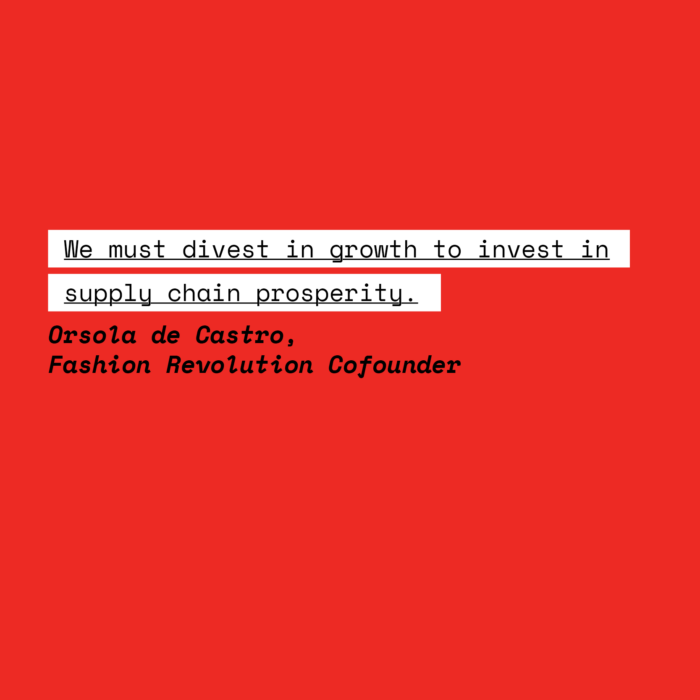
Orsola de Castro: This Pact is Copenhagen [Fashion Summit] all over again – the same people saying the same things.
Ilishio Lovejoy: We need to see more focus on the issue of overproduction as a key driver of the global climate emergency.
Orsola de Castro: Brands don’t want to talk about overproduction, but this is no longer acceptable. If we are to address climate change, fashion needs to slow down. We must divest in growth to invest in supply chain prosperity.
Sienna Somers: The bottom line is that these brands are only going to do what in their interest and what doesn’t impact profit. We need to make these issues a priority for brands and show them that if they don’t start taking action, then we will no longer support them. Once it impacts their profit, that’s when they’ll listen.
